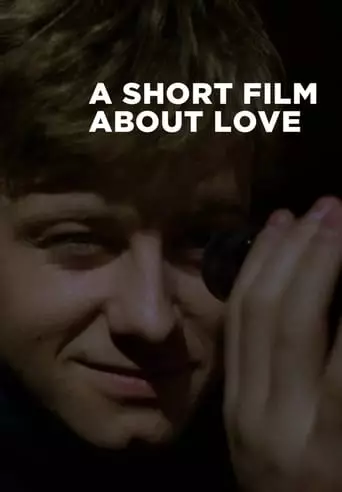
A Short Film About Love (1988) Watch Online Free
19-year-old Tomek whiles away his lonely life by spying on his opposite neighbour Magda through binoculars. She’s an artist in her mid-thirties, and appears to have everything – not least a constant stream of men at her beck and call. But when the two finally meet, they discover that they have a lot more in common than appeared at first sight…
Directed by Krzysztof Kieślowski, A Short Film About Love is a poignant exploration of desire, loneliness, and human connection. It follows Tomek (Olaf Lubaszenko), a young, isolated man who works as a postal clerk. Tomek becomes obsessed with spying on his neighbor, Magda (Grazyna Szapolowska), a beautiful and emotionally distant woman. His voyeurism goes beyond mere curiosity, as he watches her every move through a telescope. Over time, his feelings for her evolve into something deeper, though initially, it’s more about longing and obsession than love. Eventually, Tomek’s actions are discovered by Magda, leading to a complicated and uncomfortable relationship between the two. Through their interactions, the film delves into the complexities of human intimacy, the tension between self-image and reality, and the intersection of vulnerability and power.
At its core, A Short Film About Love is an exploration of voyeurism and the fine line between love and obsession. Tomek’s surveillance of Magda, which at first seems innocent, becomes a metaphor for how people often idealize others from a distance, projecting their desires onto them. However, as the narrative progresses, the film challenges the viewer’s sympathy for Tomek, showing how his inability to communicate directly with Magda results in a damaging form of attachment.
The film also tackles themes of emotional isolation. Both characters are deeply lonely, though they manifest their isolation in different ways. Magda’s detachment from her lovers contrasts with Tomek’s desperate longing, highlighting the difficulties in forming genuine connections in a world that often encourages emotional repression. Through this, Kieślowski reflects on the complexities of intimacy and how people, in their search for love, can often misinterpret or harm one another.
Visually, the film uses colors and framing to underscore these emotional states. Red and white, recurring motifs in Kieślowski’s work, represent the purity and intensity of love, but also the pain and suffering that can accompany it. The film’s cinematography, with its careful use of light and shadow, enhances the psychological tension between the characters and adds a layer of surrealism to their interactions.
A Short Film About Love left a significant impact on audiences and critics alike for its mature treatment of the themes of love and voyeurism. It stands as a unique narrative within Kieślowski’s broader body of work, particularly when compared to the more straightforwardly political themes in his Dekalog series. The film’s ability to provoke introspection about the nature of human connection and the boundaries of privacy resonated with many viewers, making it a key piece in the director’s career.
In addition, the film’s treatment of voyeurism as both a literal and metaphorical act challenged traditional cinematic representations of romantic desire. Rather than glorifying the object of desire, Kieślowski critiques the unhealthy obsession with others and the emotional costs of such behavior. This approach to storytelling helped to define Kieślowski’s reputation as a filmmaker who was unafraid to delve into the darker, more uncomfortable aspects of human relationships.
After watching A Short Film About Love, you will likely feel a mix of discomfort and introspection. The film’s exploration of voyeurism and the ethical boundaries of human connection can leave you questioning your own perceptions of love and privacy. It’s a haunting experience that forces the viewer to confront the darker aspects of desire and intimacy, leaving you with a lingering sense of unease about the complexities of human relationships. The film does not offer easy answers but rather invites reflection on the nature of connection, obsession, and the pain that often accompanies love.
